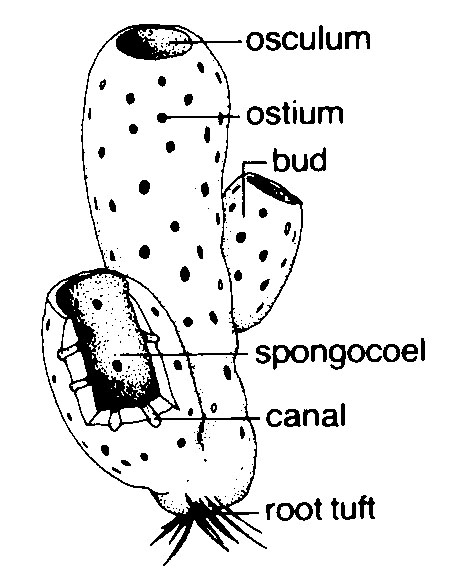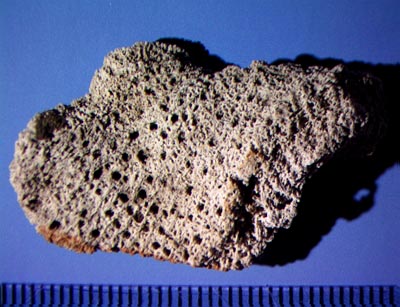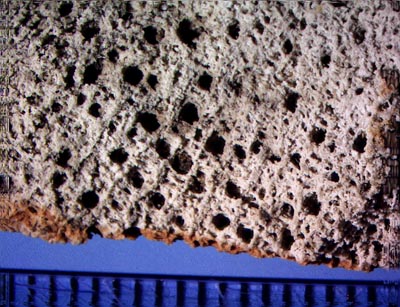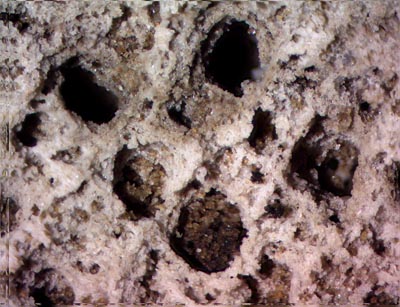|
Fort Apache
sponges are quite uncommon, only one sizable specimen was obtained
from over 200 pounds in rock. But it is well preserved, and show
the major features of fossil sponges from the Paleozoic. To be
more precise, from our first locality, where nearly all the ostracods
came from - we had no sponge material at all. The second new
site, a half a mile further down the trail produced this specimen
from about 35 pounds in limestone. They were also with numerous
bryozoans and gastropods in the same mix. The one sponge we found
is a calcareous type sponge that have been preserved by silica
replacement.
 |
Basic
anatomy of a standard sponge. The osculum which is the exhalant
opening is visible in one specimen, as well as the canals that
connect to the outside for bringing in water. The other sponge
is more amorphous, and could have had many irregular shapes. |

|
This
is the largest specimen we found, it was in a class by itself!
About 4 cm long and about 1 cm thick, this fragment of a large
irregular sponge had excellent pore and ostium details. A millimeter
scale is at bottom. 3.5x view. |

|
A
closer 7x view of its surface reveals the very "spongy"
appearance of the type you might wash your car with. The holes
are the pores which take in water to an interior cavity for respiration
and feeding on plankton. If this was a part of a large flat sponge,
those larger holes might be the osculums and the tiny surface
pores the in current holes. |

|
Even
closer at 20x, this shows the pore details more clearly in a
massive 16 focus layers stacked image. |
|
